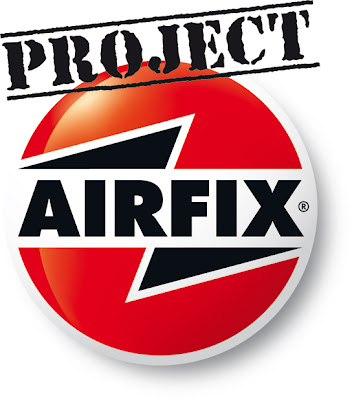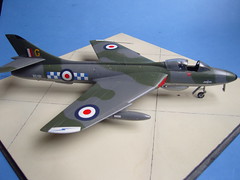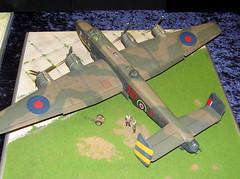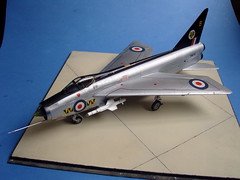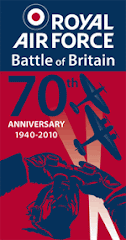With the various
70th Anniversary commemorative events currently taking place I thought it might be apt to have a look at one or two of the less well known types, in model form, operated by
Fighter Command during the
Battle of Britain.
The first subject is the fighter version of the
Bristol Blenheim Mk.I built from the
Classic Airframes kit.
As with any short run kit it does not go together with ease of the likes of
Tamiya, Hasegawa, etcetera's offerings but requires a few more skills and is not for the inexperienced modeller. Classic Airframes have issued the kit twice and made some improvement, particularly the resin wheel well inserts, the second time around. This was necessary as the inserts in the first issue simply did not fit properly inside the nacelles being rectangular boxes in shape they were far too deep at the rear for the space available. In the later issue they were replaced with inserts that have sloped top sides allowing them to be accommodated within the wing/nacelle mouldings.

Needless-to-say it was one of the first issue kits that I used for this model and soon encountered difficulties with the wheel well inserts. Despite sanding the tops of the resin mouldings to the point where they were so thin that they became transparent the top and bottom wing halves would still not meet along both leading and trailing edges. I then resorted to thinning the plastic (From the inside) of the upper wing/nacelle, as with most limited run kits the material is quite thick so this improved matters considerably but still did not completely solve the problem. In the end, having first secured the inserts in place in the lower wing halves I glued the leading edges together with superglue (
Cyanoacrylate) leaving the trailing edges unglued with a small gap between top and bottom surfaces. Once the glue along the leading edge had fully cured I then glued and clamped the trailing edges together which worked quite well but the knock-on effect was that the wings were now deeper in chord than the inset wing roots of the fuselage which then required enlargement to accept the wing sub-assemblies.
While this was going on I was also working on the fuselage, for the most part this was problem free, the cockpit and turret interiors are nicely detailed and fitted well only requiring a few minor additions such as a pilot's harness from etched brass and instrument decals from the
Reheat range. However, once the transparencies were in place it became evident that there was a fit problem with an appreciable step down from the clear parts to the fuselage sides and top. To remedy this I used two part epoxy putty (
Milliput) which was easily spread with a wet spatula to blend the contours of the fuselage into the profile of the canopy having first protected the transparent areas with a double layer of masking tape. Once set (I usually allow 24 hours) the Milliput was sanded smooth, any minor pitting or blemishes filled with "Green Stuff" and re-sanded, panel lines were then re-scribed and the rails for the sliding access panel of the canopy on top of the fuselage which had been obliterated in the process were replaced with fine rectangular section plastic rod.

The tailplanes (stabilisers) as supplied in the kit are intended to be butt jointed to the fuselage which I felt would result in a weak joint prone to break at the slightest knock and it would also be difficult to adjust their alignment. I therefore drilled a pair of small holes in each of fuselage root areas and into end faces of the tailplanes, carefully measured to correspond with each other, into these holes I inserted brass wire pins. The pins reinforced the joint once the tailplanes were glued in place and because the wire was thin and bendable it was possible to adjust the alignment so that both sides were perfectly horizontal.
The kit's resin engines are beautifully moulded in one piece but have separate exhaust pipes from each cylinder to the Townend ring which proved to be a problem to get them to fit properly and connect at both ends. In the end I decided to leave them off as once the cowling is in position they are barely visible anyway.
The undercarriage and final detailing presented no significant problems, the model was painted using
Aeromaster acrylics for the upper surfaces and my own acrylic mix for the 'Eau-de-Nil' under surfaces. It was finished in the markings of No. 604 (County of Middlesex) Squadron, based at Northholt in July 1940 using
Xtradecal roundels, codes and serials the narrow finflash came from an
Almark 1/72 scale decal sheet.

This work by
Roland Turner is licensed under a
Creative Commons Attribution-Share Alike 2.0 UK: England & Wales License.

